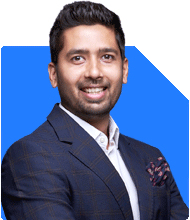I have invested lumpsum during corrections in the following funds , please advise should I continue investing more in the same funds -
HDFC BALANCED ADVANTAGE, ICICI EQUITY AND DEBT, ICICI INDIA OPPORTUNITIES, ICICI MNC , ICICI VALUE DISCOVERY, ICICI MULTI ASSET, NIPPON SMALLCAP, SBI CONTRA , ADITY BIRLA MULTI ASSET ALLOCATION , HDFC FLEXICAP.
I have invested 100000 in each fund . I am 62 years old.
Kindly advise.
Thanks and regards
Ans: Investing in the Right Mix for Your Retirement
Your current investment strategy reflects a thoughtful approach. Diversifying across multiple funds and investing during market corrections is wise. As you are 62 years old, balancing growth with capital preservation is crucial. Let's assess your current investments and explore whether you should continue adding to them.
Assessing Your Current Investments
Your portfolio includes balanced, equity, multi-asset, small-cap, and contra funds. This diversity helps in spreading risk. Each type of fund serves different purposes and offers unique benefits.
Balanced Advantage and Equity-Debt Funds
Balanced advantage and equity-debt funds invest in both equity and debt instruments. They provide growth potential with reduced volatility. These funds are suitable for investors seeking stability along with capital appreciation. Given your age, having such funds in your portfolio is beneficial. They help in managing risk while still aiming for reasonable returns.
Opportunities and MNC Funds
Opportunities and MNC funds focus on specific themes or sectors. They can deliver high returns if the chosen theme performs well. However, they come with higher risk due to concentration. These funds are suitable for investors with a higher risk appetite. At 62, you might want to limit exposure to such funds to avoid excessive risk.
Value Discovery and Contra Funds
Value discovery and contra funds invest in undervalued stocks. They aim to generate high returns by identifying mispriced opportunities. These funds require patience as value investing can take time to yield results. Including these funds in your portfolio adds a contrarian element, which can enhance returns if the market favours these stocks.
Multi-Asset and Flexicap Funds
Multi-asset and flexicap funds offer diversification within a single fund. They invest across various asset classes and market capitalizations. These funds provide flexibility and adaptability to market conditions. They can balance risk and reward effectively. Such funds are particularly beneficial for investors seeking a balanced approach to growth and risk management.
Small-Cap Funds
Small-cap funds invest in smaller companies with high growth potential. These funds can deliver substantial returns but come with higher volatility. They require a longer investment horizon to mitigate risks. At your age, it is important to carefully consider the proportion of small-cap funds in your portfolio to avoid excessive risk.
Evaluating the Need for Continued Investment
Considering your age, risk tolerance, and investment goals, here are some factors to evaluate whether to continue investing in the same funds:
Risk Tolerance and Time Horizon
Your risk tolerance decreases as you approach retirement. It is crucial to protect your capital while aiming for growth. Balanced advantage, equity-debt, and multi-asset funds provide a safer approach. Limiting exposure to high-risk funds like small-cap and sectoral funds can reduce volatility in your portfolio.
Diversification and Rebalancing
Your portfolio is already well-diversified. However, periodic rebalancing is essential to maintain the desired risk-reward ratio. Rebalancing involves adjusting your investments based on market performance. It ensures that your portfolio remains aligned with your financial goals and risk tolerance.
Income Generation Needs
At 62, generating a steady income might be a priority. Balanced advantage, equity-debt, and multi-asset funds can provide regular income through dividends and interest. Consider focusing more on these funds to ensure a steady income stream during retirement.
Consulting a Certified Financial Planner
A Certified Financial Planner (CFP) can provide personalized advice based on your unique situation. They can help you evaluate your current investments and suggest adjustments. CFPs assist in creating a tailored investment strategy that aligns with your retirement goals and risk tolerance.
Considering Other Investment Options
While your current portfolio is diversified, consider adding funds that offer capital preservation and income generation. Here are some options:
Debt Funds
Debt funds invest in fixed-income securities like bonds and debentures. They provide stable returns with lower risk compared to equity funds. Including debt funds can enhance capital preservation and provide regular income. They are suitable for conservative investors nearing retirement.
Hybrid Funds
Hybrid funds invest in both equity and debt instruments. They offer a balanced approach to growth and income. These funds are less volatile and can provide steady returns. Adding hybrid funds can enhance stability in your portfolio.
Systematic Withdrawal Plan (SWP)
A Systematic Withdrawal Plan (SWP) allows you to withdraw a fixed amount regularly from your investments. It provides a steady income stream during retirement. Consider setting up an SWP from your balanced advantage or multi-asset funds to meet your income needs.
Conclusion
Your current investments reflect a thoughtful and diversified strategy. To ensure continued growth and capital preservation, focus on balanced advantage, equity-debt, and multi-asset funds. Limit exposure to high-risk funds and consider adding debt and hybrid funds for stability. Regularly review and rebalance your portfolio to maintain alignment with your goals. Consulting a Certified Financial Planner can provide personalized guidance and help you achieve a secure and comfortable retirement.
Best Regards,
K. Ramalingam, MBA, CFP,
Chief Financial Planner,
www.holisticinvestment.in



























